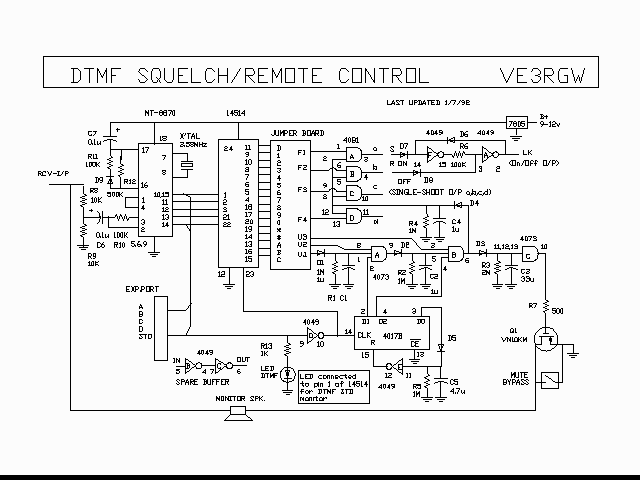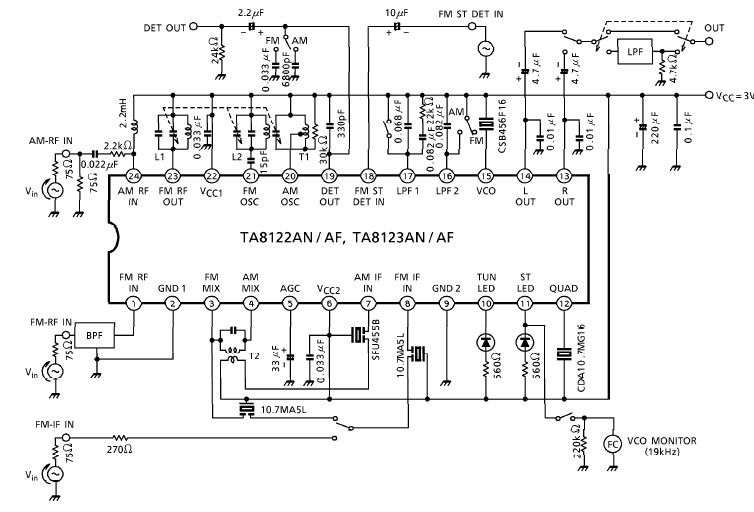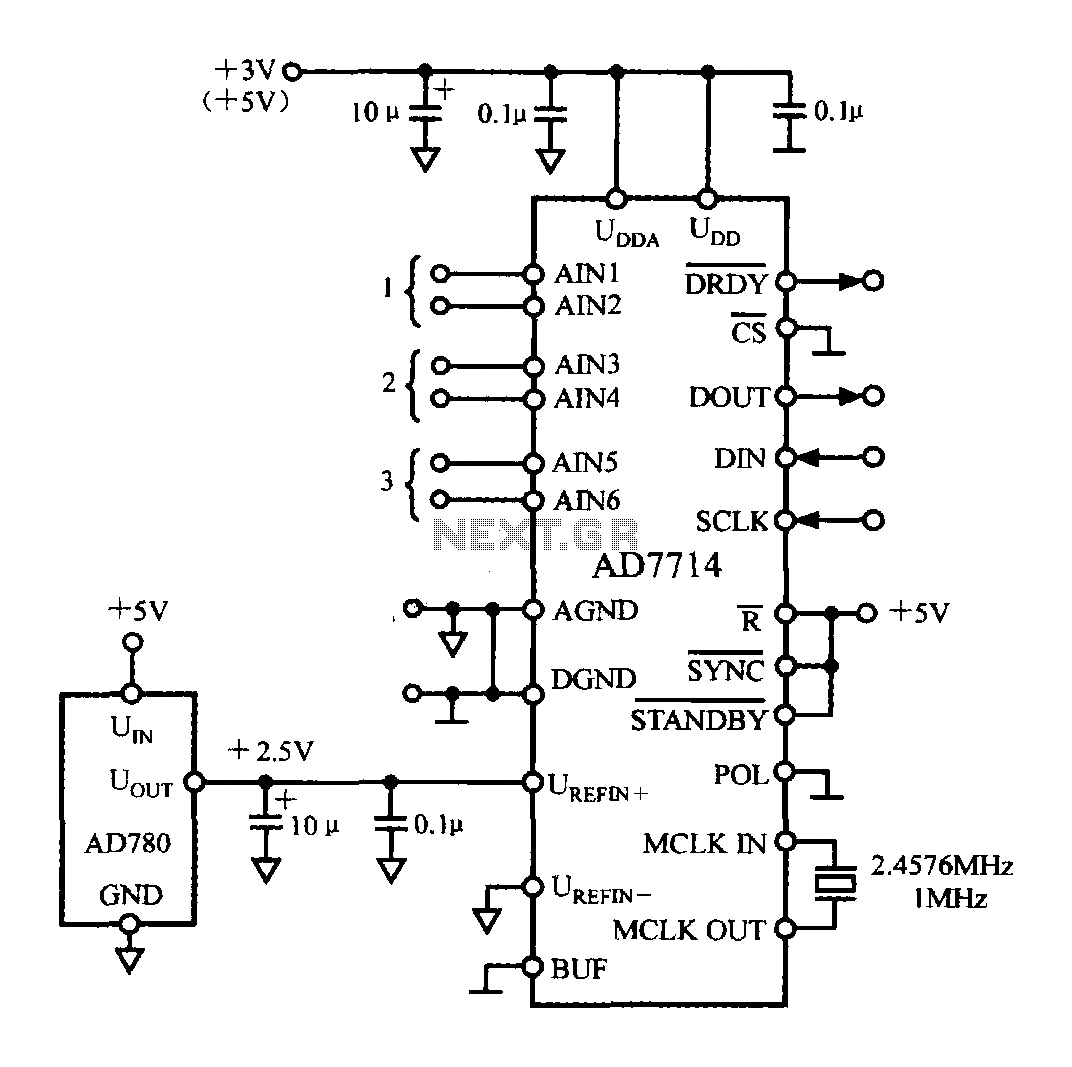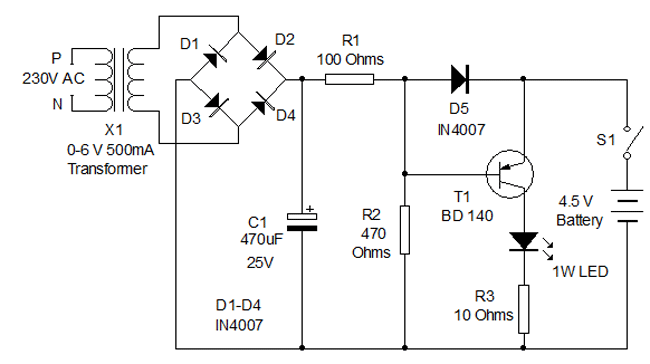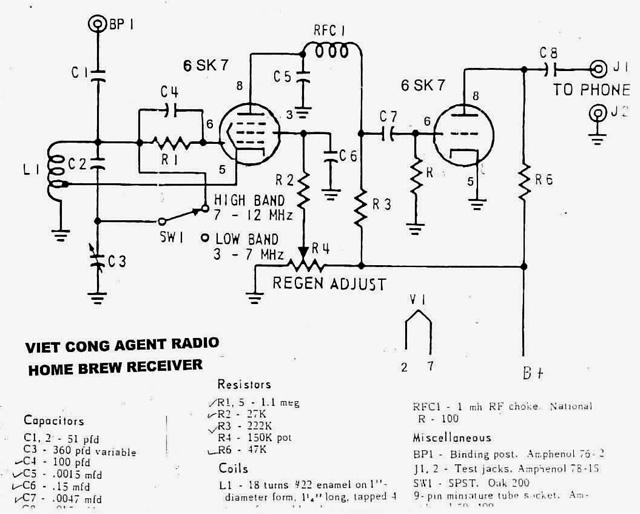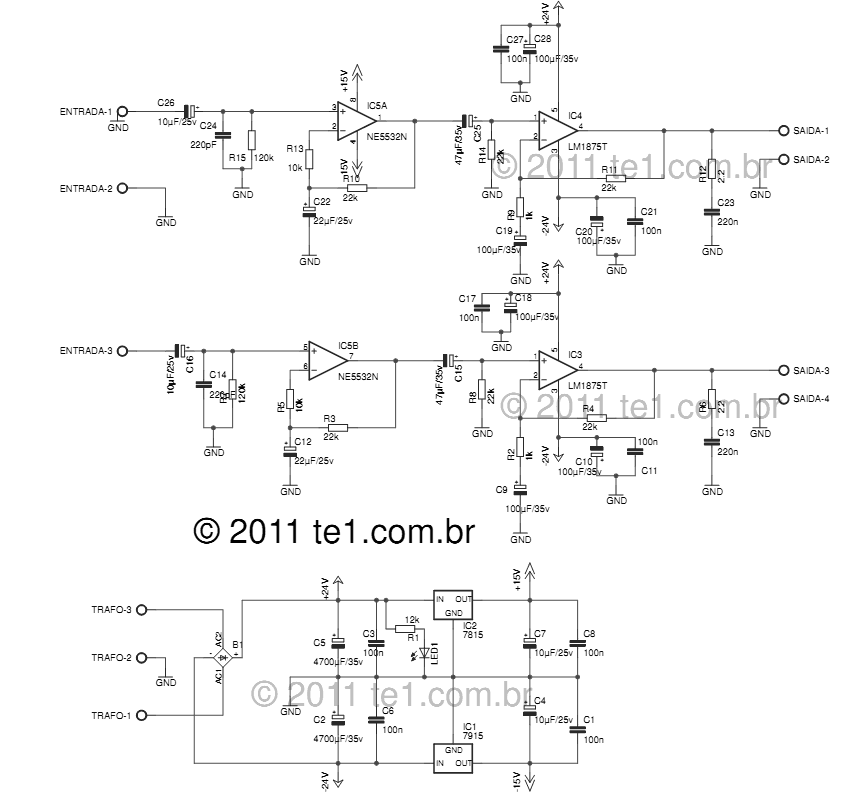
Low-noise differential amplifier circuit composed PGA203 and OPA27
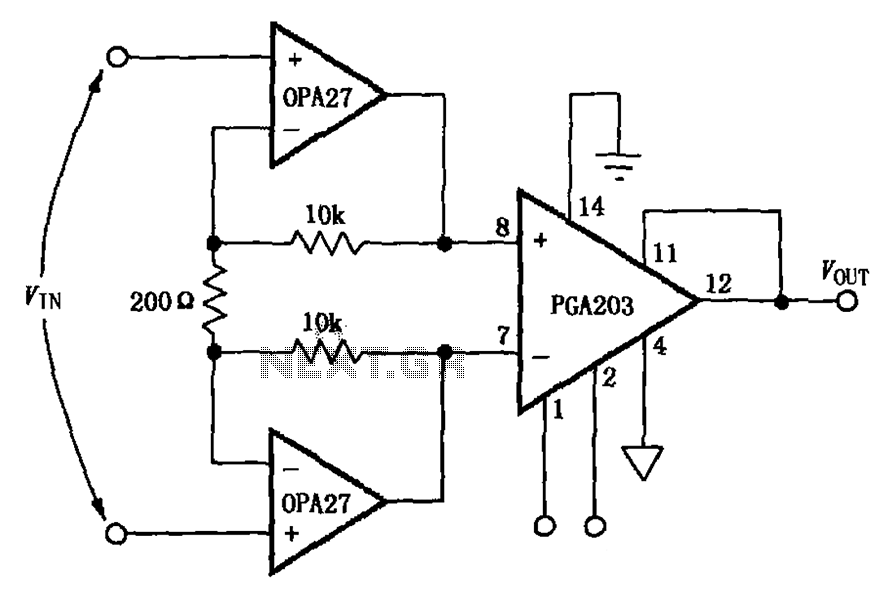
The circuit depicted in the figure features a PGA203 operational amplifier (op amp) and two OPA27 op amps, forming a low-noise differential amplifier. The input stage utilizes the PGA203 in conjunction with the two OPA27 op amps. The non-inverting input terminal of the PGA203 serves as a high-impedance differential input, providing excellent common-mode noise rejection. The gain configuration of the two OPA27 op amps is set to a minimum of 100, while the PGA203 can be configured for gains of 1, 2, 4, or 8. Consequently, the total gain of the circuit can achieve levels of 100, 200, 400, or 800.
The circuit design incorporates the PGA203 as a key element in achieving a high-input impedance and low-noise performance. The PGA203 is particularly suited for applications requiring precision signal amplification, as it minimizes the impact of common-mode signals that can introduce noise and distortion. The two OPA27 op amps are utilized in a non-inverting configuration, which further enhances the signal integrity while providing the necessary gain.
The overall gain of the circuit is determined by the product of the gains from the PGA203 and the two OPA27 op amps. This modular gain structure allows for flexibility in application, enabling the circuit to be tailored to specific signal amplification requirements. The combination of the PGA203 and OPA27 op amps not only ensures high performance but also maintains stability across a range of input conditions.
In practical applications, this differential amplifier configuration is ideal for sensor interfacing, data acquisition systems, and other scenarios where low-noise amplification of differential signals is critical. The careful selection of components and their arrangement in the circuit contributes to the overall reliability and effectiveness of the amplifier in processing weak signals while rejecting unwanted noise. As shown in FIG grounds PGA203 op amp OPA27 constitute a low noise differential amplifier. The circuit at the input PGA203 plus two op amps OPA27, signals from the two op amps noninverting input terminal, using two op amps noninverting amplifier PGA203 high impedance differential input characteristics, the common mode noise rejection to Min. Gain two op amps OPA27 composed of 100, PGA203 gain 1,2,4,8, multiplying the two, so the total gain of the circuit 100,200,400,800.
The circuit design incorporates the PGA203 as a key element in achieving a high-input impedance and low-noise performance. The PGA203 is particularly suited for applications requiring precision signal amplification, as it minimizes the impact of common-mode signals that can introduce noise and distortion. The two OPA27 op amps are utilized in a non-inverting configuration, which further enhances the signal integrity while providing the necessary gain.
The overall gain of the circuit is determined by the product of the gains from the PGA203 and the two OPA27 op amps. This modular gain structure allows for flexibility in application, enabling the circuit to be tailored to specific signal amplification requirements. The combination of the PGA203 and OPA27 op amps not only ensures high performance but also maintains stability across a range of input conditions.
In practical applications, this differential amplifier configuration is ideal for sensor interfacing, data acquisition systems, and other scenarios where low-noise amplification of differential signals is critical. The careful selection of components and their arrangement in the circuit contributes to the overall reliability and effectiveness of the amplifier in processing weak signals while rejecting unwanted noise. As shown in FIG grounds PGA203 op amp OPA27 constitute a low noise differential amplifier. The circuit at the input PGA203 plus two op amps OPA27, signals from the two op amps noninverting input terminal, using two op amps noninverting amplifier PGA203 high impedance differential input characteristics, the common mode noise rejection to Min. Gain two op amps OPA27 composed of 100, PGA203 gain 1,2,4,8, multiplying the two, so the total gain of the circuit 100,200,400,800.
